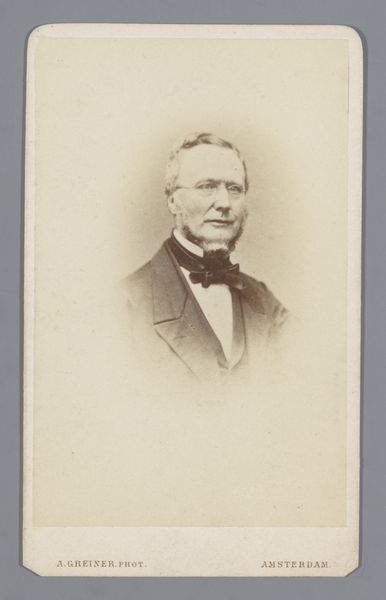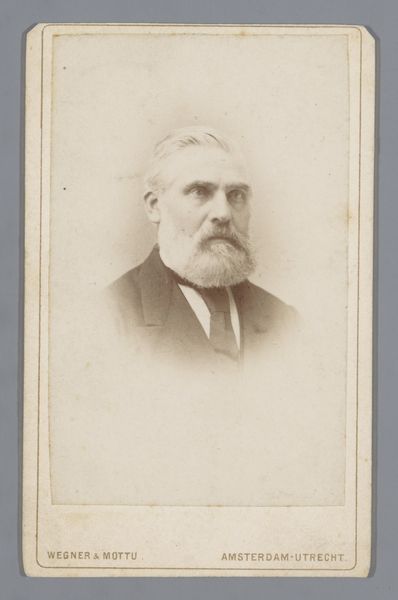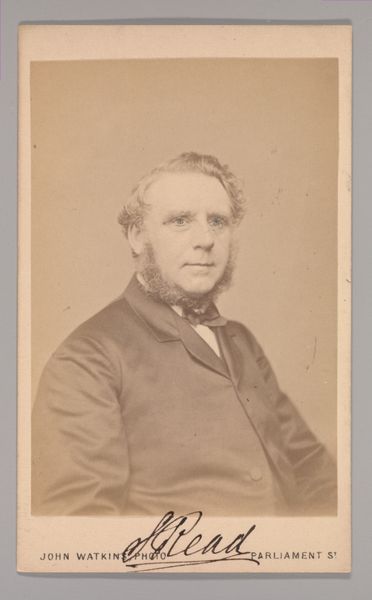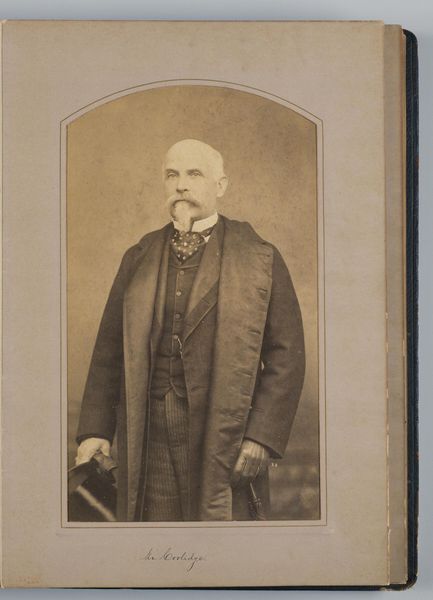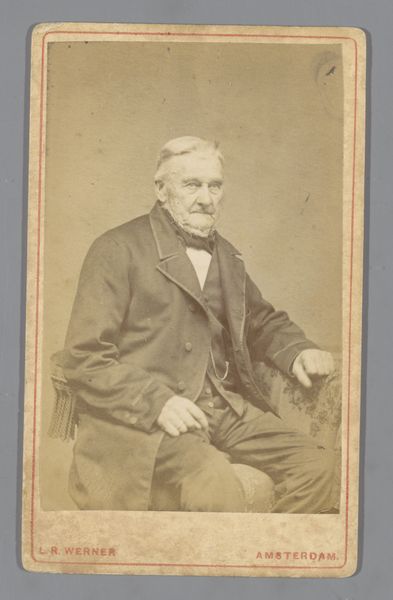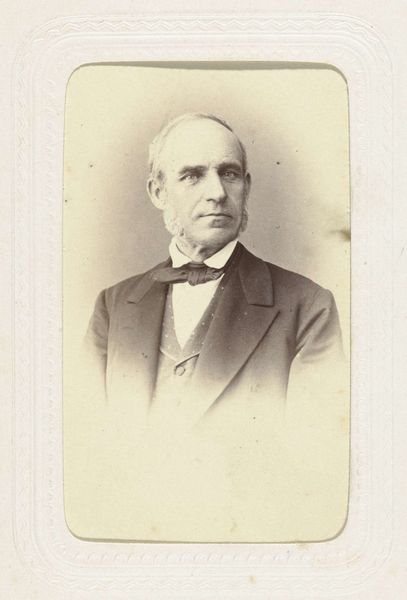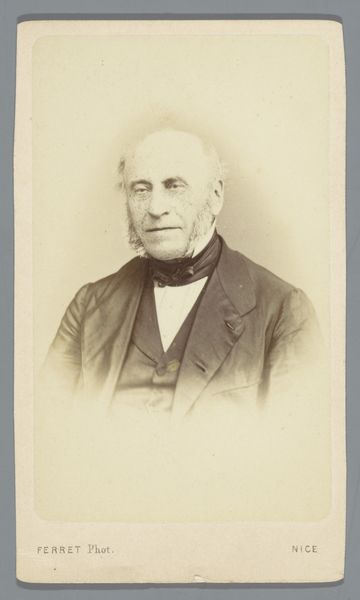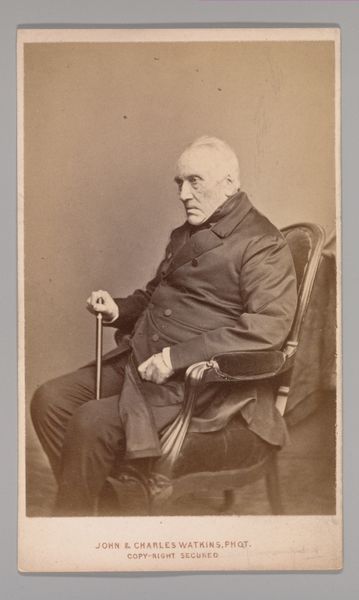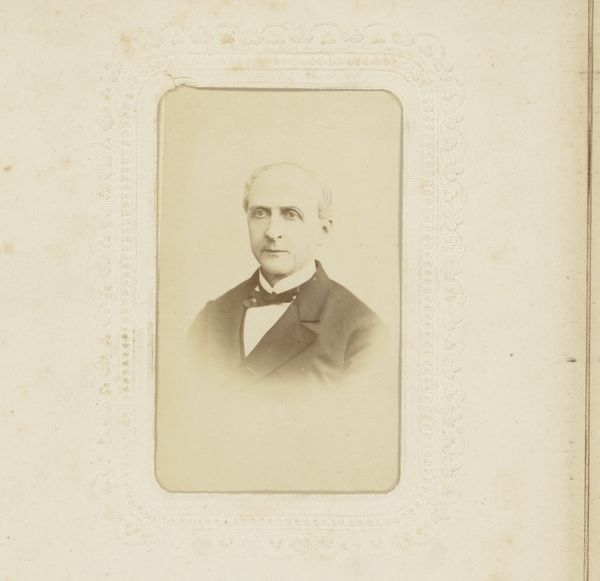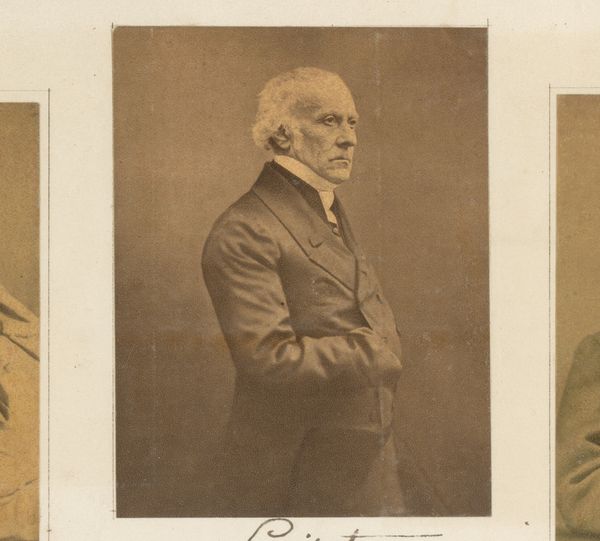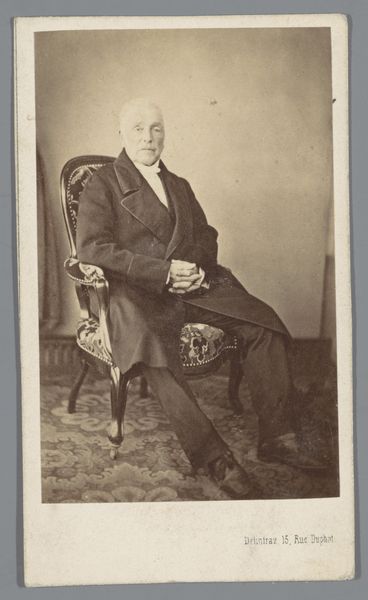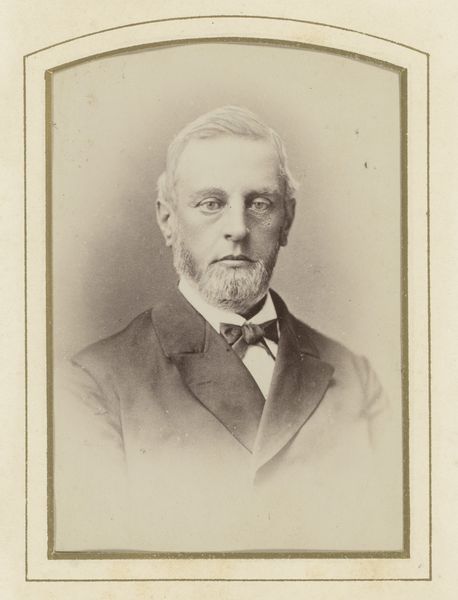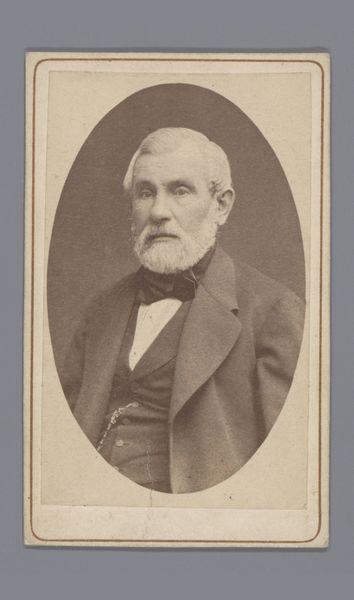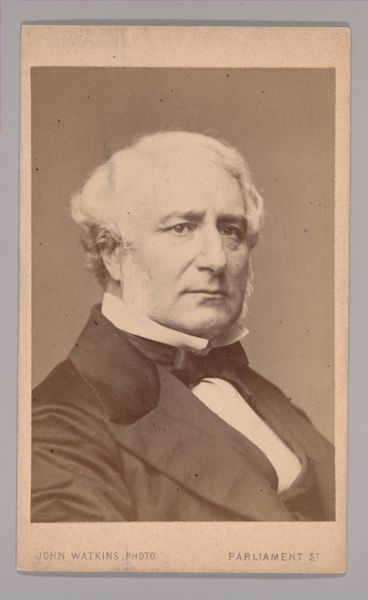
daguerreotype, photography
#
portrait
#
daguerreotype
#
photography
#
realism
Dimensions: height 104 mm, width 67 mm
Copyright: Rijks Museum: Open Domain
Editor: The sepia tones really give "Portret van de heer N.M. Feringa" a spectral quality. Is that typical for a daguerreotype from the 1870s? Curator: Precisely. Daguerreotypes, while technically advanced for their time, produce a singular image on a silver-plated copper sheet, hence that reflective, almost ghostly appearance. The process demands long exposure times, which explains the subject’s still, contemplative gaze. Editor: But thinking about materiality, what would it have been like to sit for such a portrait? Not just the sitter's experience, but also the photographer, Albert Greiner, having to coax someone into stillness while handling those delicate, chemically treated plates? Curator: I think Greiner capitalizes on that very stillness to create a striking sense of depth and form. Observe how the stark white of the subject's hair and cravat are offset against the somber jacket. It creates an arresting composition of light and shadow. Editor: Right. The stark contrasts weren't only compositional but perhaps practical too. Considering the sensitivity of early photographic materials, the attire wouldn’t be mere fashion, but rather contribute to creating a successful, legible image. Curator: Indeed, semiotics play a significant role. Consider his monocle, it suggests intelligence, perhaps even eccentricity; while his formal wear hints at societal standing and respectability. It is not just a record, it’s a carefully constructed image of status. Editor: But I find myself questioning that status, imagining the hands that mined the silver, processed the chemicals, and labored to craft even his clothing. All that human effort distilled into this single, still moment, meant to elevate an individual. Curator: That's a potent perspective, focusing as it does, on those invisible efforts. Viewing "Portret van de heer N.M. Feringa" in such a context opens new channels for interpreting the art, where we understand an individual subject nested in labor relations. Editor: For me, considering those factors, this piece moves beyond a formal portrait. It prompts broader reflections about who we choose to immortalize through art. Curator: An entirely valid and socially pertinent way to observe. In any event, the artwork presents a fascinating interplay of societal projection and sheer aesthetic construction.
Comments
No comments
Be the first to comment and join the conversation on the ultimate creative platform.
